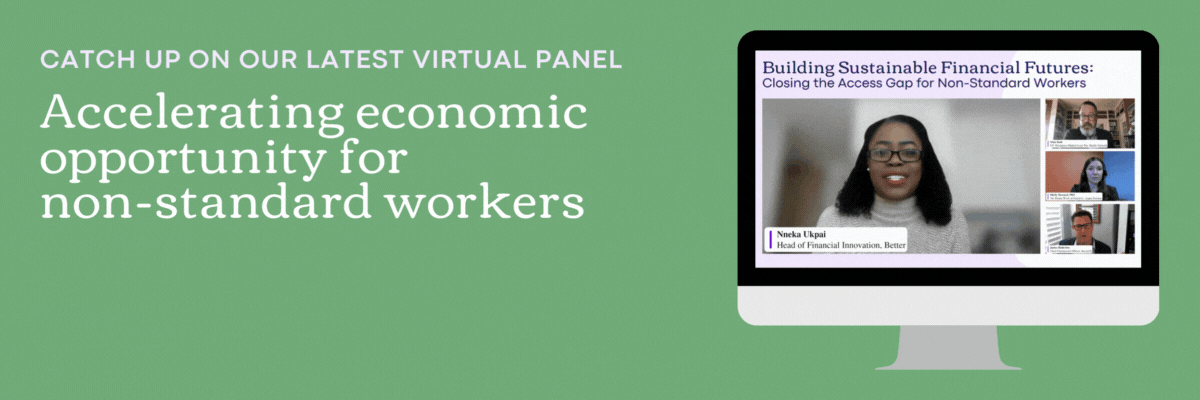A CEO Approach to Tackling Unwinding Continuous Coverage

With continuous coverage winding down, state Medicaid agencies are faced with a daunting challenge, without clear guidance on how to tackle it. The need to renew millions of enrollments—in a labor shortage with a lot of turnover—makes the end goal feel like an impossible feat… something CEOs in the private sector call a BHAG (Big Hairy Audacious Goal).
It’s a delicate task - balancing costs with investment in resources and efficiencies. Additional factors like federal and state compliance, budget, challenging procurement cycles, political backlash, and media and constituent feedback further complicate matters for states, but ultimately the problem can be considered the same way it would in business. Let's take a step back and approach this BHAG from the perspective of a CEO.
Background
Since March 2020, states have been required to maintain the enrollment of nearly all Medicaid recipients in order to receive a temporary 6.2 percent Federal Medical Assistance Percentage (FMAP) increase. This requirement is expected to expire in the coming months, and states will then have 12 months to “unwind,” or return to normal eligibility and enrollment operations for their Medicaid enrollees, who total over 80 million across the U.S.
The Centers for Medicare and Medicaid Services (CMS) calls the expiration of the continuous coverage requirement “the single largest health coverage transition event since the first open enrollment period of the Affordable Care Act.” Completing this enormous influx of redeterminations in a short period of time presents challenges of varying magnitudes for each state, depending on planning and the availability of appropriate resources.
Some states are going through additional changes on top of the continuous coverage requirement ending, according to the National Academy for State Health Policy. As a result, states are starting to employ different strategies to prepare for their respective change(s), but according to a Kaiser Family Foundation survey conducted in January, only 27 states had determined their approach.
The Fortune 500 Approach
If you think like a CEO of a Fortune 500 company, you recognize that this is going to require a transformation across multiple departments that will demand diligent planning, training, and adoption of new ways of working. How do you create a strategic plan that prepares you for the enormous hurdle and delivers an experience that meets (or exceeds) the expectations of Medicaid enrollees, while also appeasing your key stakeholders by staying on time and on budget? When CEOs are faced with an obstacle of this magnitude, they consider their infrastructure (people, processes, and technology) and whether or not they are equipped to handle the problem.
1. Evaluate Your Current State
Evaluate the current state of your program and your preparedness for the unwinding of continuous coverage. Identify the areas that present the biggest hurdles: processes, people or technology. One way to do this is to map out workflows in order to determine the full enrollment lifecycle: how many man hours does it take for one Medicaid enrollee to be fully processed? How does that vary depending on the type of enrollee? Knowing this reality within your timeframe and in relation to your current staffing will help you understand what you’re up against.
It may also be helpful to understand how many of your enrollees can verify their income relatively easily online (those with W-2 income, if your system is set up to be able to connect with employment verification tools) and how many may have bigger challenges – like the gig workforce (1099 workers), or those that aren’t employed at all. Enrollments that are more time-consuming, paper-based, and require more manual reviews should be accounted for, and you may want to consider investment opportunities (people or technology) to alleviate that burden.
Other factors may also drive how big your caseload is. The Medicaid office offers a number of tools and resources, (such as risk assessment tools) that can help illustrate the full scope of your current state and identify your potential challenges in the coming months.
2. Optimize Your Processes
Take a look at the processes your team currently uses and the workflows you mapped out. Are there any quick wins you can achieve by streamlining a process or cutting out a middle man?
What pieces of the process can you get ahead of and work on now (for example, consider whether materials provided by the Medicaid office, like the communications toolkit, could help speed up some of the initial planning and preparation that enrollees must do to re-enroll?) The more work you can do to inform the public of the upcoming renewal cycle, the more prepared they will be to provide you the information you need.
Look at your ex parte process and see how you can optimize it. Re-enrolling as many people as possible without having to engage with them may be one of the biggest time savers your program can have. The Center on Budget and Policy Priorities wrote that, “successful ex parte renewals free enrollees from having to respond to notices, trying to reach the agency to ask questions or get clarification, and risking loss of coverage due to administrative red tape,” and provide additional ideas for improving the ex parte process in this article.
If your program typically partners with other benefit programs to refer people who no longer qualify for Medicare, work on collaborating with them to increase efficiency, so that this process does not slow down your overall workflows. The Centers for Medicare & Medicaid Services have offered up some strategies to improve Medicaid to Marketplace coordination and maximize enrollee transitions at the end of the continuous enrollment requirement that may be helpful to your program.
After evaluating your current state and seeing where you can improve your current processes, you should have a better idea of where you may need to invest: in people, technology, or both.
3. Staff Up and Prepare Your People
Based on your evaluation, you may have an idea of how many staffing resources you will need to stay on track over the next year or so. With nationwide labor shortages, it’s key to start recruiting people now. Eligibility worker turnover has been high, NPR reports, and some states already have a huge backlog of new enrollments to be processed, not even considering the current enrollees that need to be recertified.
Knowing the typical wages your state pays eligibility workers, you can calculate how big of an investment in people you would have to make in order to be fully functional, and you may consider how those dollars could be invested in technology that could automate processes and reduce the need for workers.
In addition to staff recruitment and retention efforts, an effective training program must also be in place, ensuring that the most efficient re-enrollment process is understood by the team to get through the caseload with both accuracy and speed.
4. Use Innovation and Technology to Your Advantage
If your current state evaluation shows that your enrollment systems are antiquated and are hindering your staff’s ability to efficiently and effectively manage enrollments, it may be an opportune time to consider upgrading your technology. Understanding the ROI on tech upgrades can be difficult, but with the hiring challenges, and downward pressure from the federal government to modernize and improve the experience and access to benefits, it’s an avenue that can’t be ignored.
Innovation is critical for the future of benefits administration. The public health emergency has spotlighted the weakness of the current infrastructure, as it buckled under a deluge of demand. Several states are applying modernized systems in the form of tech-enabled safety net (TESN) tools. These tools are designed to improve public benefits from an efficiency, integration and reach standpoint, while decreasing the need for manual processes. For example, a public benefit corporation called Nava developed an uploader tool that helped the state of Vermont streamline the submission of documents. By implementing the tool, documents were more easily uploaded, making the process of verifying the identity and income of state assistance program applicants much more efficient.
For certain segments of the population, technology improvements can make a huge difference. Gig workers, accounting for 36% (and growing) of the entire workforce, is a subset of Medicaid enrollees whose eligibility is particularly challenging to recertify. The complexity of income sources puts a strain on state agencies and case workers, resulting in longer, more manual determinations.
SteadyIQ has an exclusive solution that plugs into state benefits administration systems and allows gig workers to integrate their proof of earnings into the process. With this population expected to reach over 50% of the total workforce by 2025, it is important to understand how your processes will be impacted by the growing need to serve them and to consider a solution like SteadyIQ’s income verification, which improves workflow efficiency, program integrity, and health equity with non-disruptive integration into state systems. As a result, those eligible for Medicaid are more likely to stay eligible, and those ineligible for Medicaid are more easily directed to the health insurance marketplace.
A CEO charged with an effort of this magnitude and complexity may be overwhelmed at first, but with a mindset of understanding the current state and considering the impacts to processes, people, and technology, the change can be planned for and successfully executed upon. Taking these steps well in advance of the formal ending of the public health emergency will set up your program to produce better outcomes, serve your constituents well, and to do so on time and on budget.
About the Author
Lexi Gervis, PhD is an economic sociologist who has conducted extensive research on benefits for non-standard workers, low-wage work, income volatility, and the institutional transmission of inequality. Since completing her doctoral work on portable benefits, Lexi has turned her attention to the private sector, working with tech start-ups focused on improving financial outcomes for non-standard workers. Formerly the Head of Policy at Catch, a portable benefits platform, she is currently the Director of Public Sector & NGO Engagement at Steady, a platform designed to improve the earnings potential and income stability of its 5+ million members. At Steady, Lexi coordinates efforts with state and federal leaders on benefits’ access, leads the platform’s impact work on guaranteed income, and manages collaborations with think tanks and research institutes on Steady’s broader policy goals.

